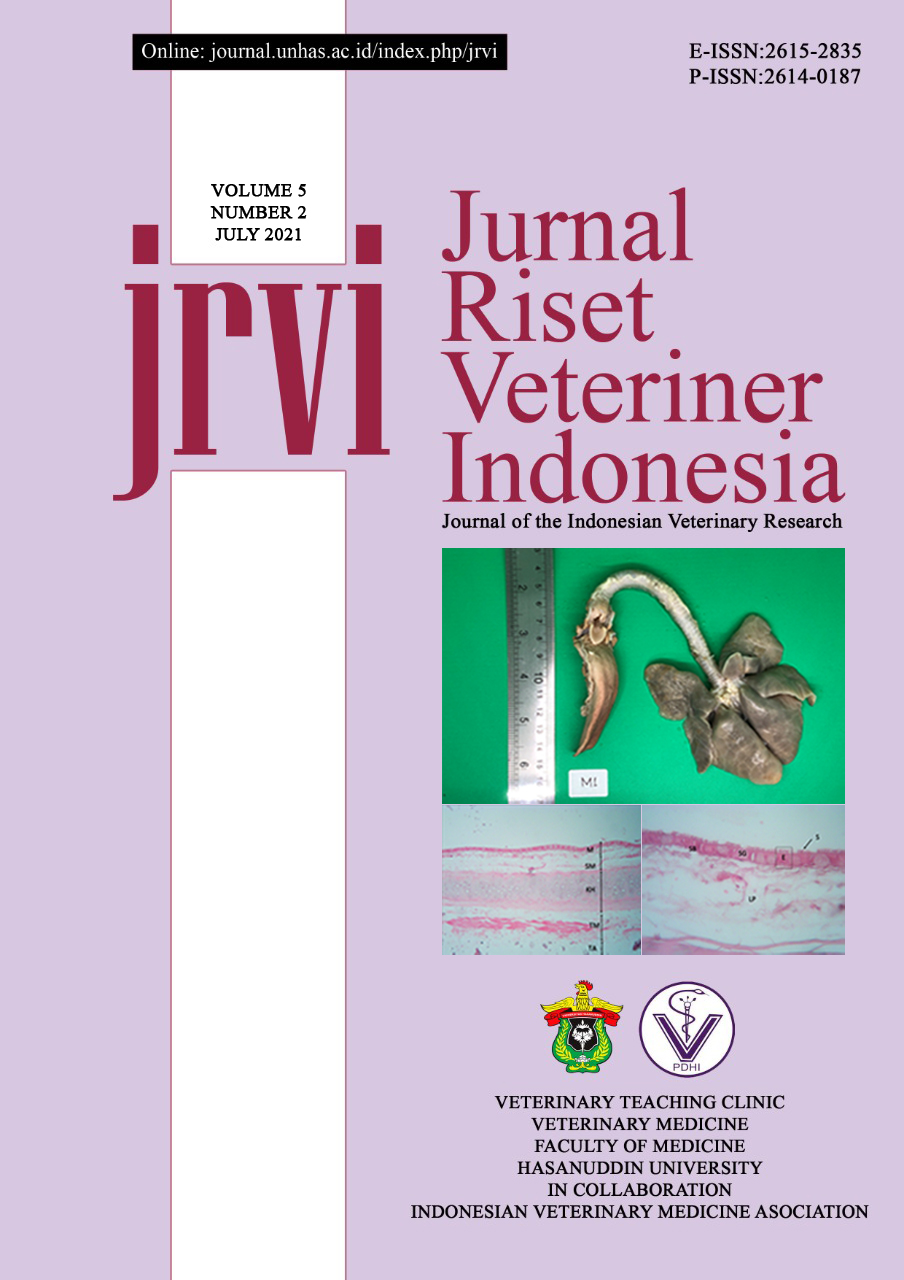Abstract
Avian Influenza (AI) is an infectious disease caused by the influenza type A virus. The highly pathogenic AI (HPAI) H5N1 outbreak in Indonesia has occurred since 2003 until now. Education, biosecurity, vaccination, elimination, diagnostic, and surveillance are strategy to prevent and control AI virus (AIV) infection. Providing antiviral drug can be used as an alternative to control AIV in poultry, but it will be limited if resistance occurs. This study aims to determine the resistance to neuraminidase inhibitors (NAIs) (oseltamivir) and M2 ion channel inhibitors (amantadine) of HPAI H5N1 virus isolated from poultry in Sulawesi during 2017-2018. This research was conducted by whole-genome sequencing (WGS) with the next generation sequencing (NGS) (Illumina) technique on 5 poultry virus isolates. Molecular analysis was performed by multiple alignments and amino acid prediction using the MEGA X program. Antiviral resistance of oseltamivir and amantadine was assessed based on analysis of NA and M2 proteins compared to reference isolates from Sulawesi in NCBI. Based on the NA protein analysis, no mutations were found at positions 119, 275, 293, and 295, indicating that all the samples and reference isolates from Sulawesi are still sensitive to oseltamivir. Whereas at positions 26, 27, 30, 31, and 34 of M2 protein, there was a V27I mutation in Sulawesi reference isolate in 2016 and the combination of V27A and S31N mutations in 2 research isolates in 2018, which indicate possible resistance to amantadine. In conclusion, there is amantadine resistance of HPAI-H5N1 virus isolated from poultry in Sulawesi, 2018.

This work is licensed under a Creative Commons Attribution-NonCommercial 4.0 International License.

